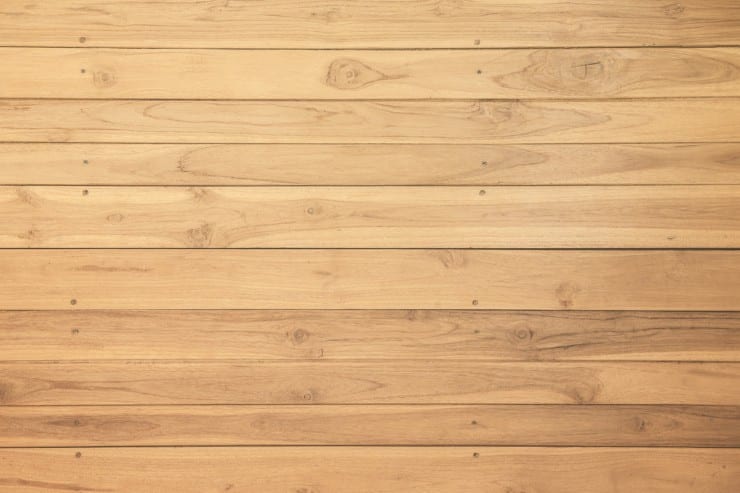Does Wood Paneling Absorb Sound?
Do you have a room in your house that you want to make soundproof? If this is the case, you might be considering if wood paneling is the answer for you.
This blog post will explore whether or not wood paneling absorbs sound and provide some tips on soundproofing a room using this material.
Does Wood Paneling Absorb Sound?

Yes, wood paneling is a popular choice for homeowners looking to soundproof their homes because it effectively absorbs sound.
Wood paneling can reduce the amount of noise that travels through walls by up to 50%.
If you consider using wood paneling to soundproof your home, here are some tips to help you get started.
Tips for Using Wood Paneling to Soundproof Your House
The soundproofing qualities of wood paneling are dependent on the type and thickness of the material.
Solid hardwood panels will absorb more sound than MDF or plywood.
The thicker the panel, the greater its ability to absorb sound waves; however, you do not need to have a thick layer of wood for it to block out sound effectively.
You can use a thin layer of veneer as well.
If you have a room in your house that is particularly noisy, such as a nursery or playroom for small children, consider installing some acoustic insulation behind the paneling before mounting it on top of the drywall.
This insulation will help to reduce noise transmission further.
It is essential to install it properly to maximize the soundproofing properties of wood paneling. Be sure to use construction adhesive and screws or nails to attach the panels securely to the wall.
You may also want to consider using a sealant around the edges of the panels to prevent sound from escaping.
Types of Wood That Absorb Sound the Best
Different types of wood absorb sound differently, so it’s essential to choose the right one. Let’s discuss five types of wood known for their sound-absorbing abilities.
Maple
Our top choice wood for absorbing sound waves would have to be maple.
Maple is a hardwood with closed pores and an extremely dense grain structure; these two factors give it excellent acoustic properties.
It can absorb noise in the lower octaves, just like fiberglass. However, it is lighter in weight, so it does not require much support for walls or ceilings, making it easier to install.
Cherry Wood
Cherry wood is another excellent choice for absorbing sound waves. It is a hardwood with extremely tiny closed cells and a fine grain structure.
These features give it excellent acoustic properties and make it ideal for musical instruments such as violins and guitars.
You’ll want to convert the strings’ vibration into high-quality sound without any interference from outside noise.
Ash
Another excellent wood for absorbing sound is Ash which is also hardwood.
It has relatively large pores between its grains and the added benefit of having closed pores, making it an even better absorber of low-frequency noise than maple or cherry wood.
Pine
One other type of wood that is great at absorbing sound waves would have to be pine. Pine is a relative softwood; therefore, it is significantly less dense than hardwoods.
However, its closed pores and long straight grains can still absorb high frequencies very well.
Redwood
Lastly, a type of wood known as redwood also has excellent acoustic qualities. Redwood is soft, just like pine, although it has a very dense grain structure and large open pores.
Its best attribute for acoustical purposes is its ability to absorb noise in the mid to high-frequency range from 250 Hz to 4000 Hz.
Benefits of Wood Paneling

Wood paneling is a popular way to cover walls and ceilings. It comes in various colors and styles, making it an easy way to change the look of a room without painting.
Wood paneling also has some acoustic benefits.
- The panels help absorb sound, which can make a room quieter. It is beneficial in home theaters or offices where people need to concentrate.
- The panels also help to reduce echo, making the room sound more natural.
- Wood is a porous material that naturally absorbs sound waves. It also helps to insulate against heat loss or gain, which can be advantageous in high-ceilinged rooms where heat rises quickly toward the ceiling.
- Wood paneling has become a popular choice for interior walls because it’s more environmentally friendly than drywall or plasterboard.
- Wood paneling is a great way to improve the acoustics of a room without having to do any construction. It is an affordable way to add extra insulation and make the space more comfortable.
- It’s an excellent material for covering up old walls that have aged due to mold, water damage, and other factors.
- The best part about wood paneling is that a DIYer can install it with basic carpentry skills. If you’re not confident in your abilities, you can always hire a professional to do the job for you.
Frequently Asked Questions
Is There Any Other Way to Soundproof My Home Without Using Wood Paneling?
Yes, there are a few other ways to soundproof your home without using wood paneling.
One option is to install acoustic tiles on the ceiling and walls; you can also use heavy curtains to help muffle noise from outside sources.
Can I Use Regular Wood, or Do I Need Unique Soundproofing Panels?
Yes, you can use regular wood paneling to help with sound absorption; however, you may find that the results are not as good as if you were to use a specialty product designed for this specific purpose.
Final Thoughts
If you are looking for an affordable and easy-to-install solution for soundproofing your home, wood paneling may be the perfect option for you.
With a little bit of effort, you can dramatically reduce the amount of noise that travels through your walls.
Give it a try today.







